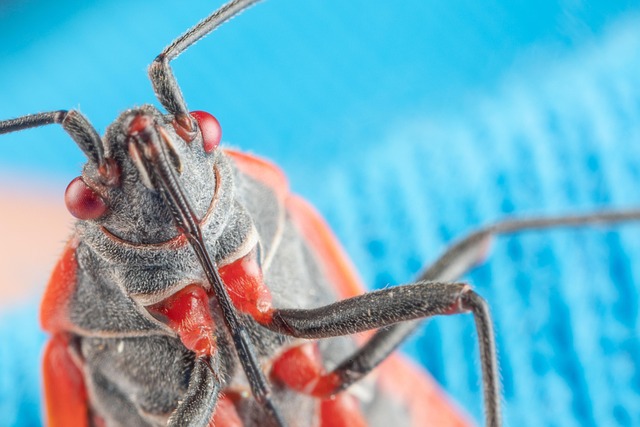Pillbugs, common garden pests, can cause significant harm. Recognizing their nocturnal behavior and moisture attraction is key for early detection through signs like damaged plant material and stunted growth. Effective pillbug infestation treatment involves identifying the problem before implementing control measures. Eco-friendly methods like physical barriers (sealing entry points) and traps (using attractants) combat infestations without chemical treatments, promoting sustainable living and long-term control.
In the face of persistent pillbug infestations, many homeowners and gardeners find themselves seeking effective treatment methods. This article delves into the world of pillbug control, offering insights on understanding and managing these annulling creatures. From traditional approaches to modern strategies, we explore the power of barriers and traps as game-changers in pillbug infestation treatment. Learn how implementing specific barrier and trap strategies can provide long-term solutions for a pest-free environment.
Understanding Pillbug Infestations and Their Impact
Pillbugs, also known as roaches or armadillos, are small, wingless insects that can quickly multiply and cause significant damage to gardens, lawns, and crops. Understanding their behavior and life cycle is crucial for effective pillbug infestation treatment. These creatures are particularly attracted to moisture and organic debris, making them common pests in areas with high vegetation and compost piles.
When dealing with a pillbug infestation, it’s essential to recognize the signs early on. Pillbugs often leave behind trails of damaged plant material, and their presence can lead to stunted growth and reduced crop yields. They are most active during nightfall and dawn, so observing plants and gardens during these times can help detect their activity. Identifying the extent of the infestation is vital before implementing control measures, ensuring a successful pillbug infestation treatment strategy.
Traditional Methods of Pillbug Control
Pillbugs, also known as roaches or wood lice, can be a persistent and unsightly problem for homeowners and garden enthusiasts alike. Traditional methods of pillbug infestation treatment often involve chemical pesticides, which may offer temporary relief but come with potential health risks and environmental concerns. These chemicals can also harm beneficial insects, disrupting the delicate balance of your ecosystem.
As an alternative, many are turning to physical barriers and traps as a safer and more eco-friendly approach to pillbug control. By understanding the habits and preferences of these creatures, you can employ strategic methods to keep them at bay. Physical barriers like sealing cracks and gaps in walls and floors prevent pillbugs from entering your space. Traps, both commercial and homemade, use attractive elements combined with quick-acting mechanisms to capture and eliminate pillbugs without resorting to chemicals. This not only helps maintain a clean and healthy environment but also promotes a more sustainable living practice.
The Role of Barriers and Traps in Modern Pest Management
In the modern era of pest management, barriers and traps have emerged as powerful tools in the battle against pillbugs, or armadillos as they’re sometimes known. These strategic defenses offer a non-chemical approach to pillbug infestation treatment, appealing to environmentally conscious consumers and providing an effective alternative to traditional pesticides. By creating physical obstacles and luring mechanisms, homeowners and professionals alike can efficiently contain and control these persistent pests.
Barriers, such as protective netting or mesh, act as impenetrable walls, preventing pillbugs from accessing vulnerable areas like gardens and crop fields. Traps, on the other hand, utilize attractants and clever mechanics to ensnare and eliminate pillbugs. From simple DIY solutions to sophisticated commercial traps, these methods offer a dynamic range of options for managing infestations effectively. Their versatility allows for tailored strategies, ensuring that every environment receives the most suitable protection against these tenacious creatures.
Implementing Effective Barrier and Trap Strategies for Long-Term Control
Implementing effective barrier and trap strategies is a key aspect of achieving long-term control for a pillbug infestation. These methods offer a more sustainable solution compared to quick fixes or chemical treatments, which may provide temporary relief but can lead to resistance and environmental harm. By creating physical barriers and utilizing specific traps, you can significantly reduce the presence of pillbugs over time.
One approach is to seal entry points and potential hiding places by using caulk or other sealing materials around foundations, cracks, and gaps in walls or doors. This prevents pillbugs from easily accessing buildings and reduces their overall population. Additionally, setting up traps at strategic locations can help monitor and control infestations. Pheromone-based traps are particularly effective as they attract and capture pillbugs without the need for harmful chemicals, making them a safer and more eco-friendly option for pillbug infestation treatment.
Pillbugs can cause significant damage to lawns and gardens, but with the right strategies, their infestations can be effectively managed. While traditional methods offer some relief, modern pest management techniques emphasize the importance of barriers and traps for long-term control. By understanding pillbug behavior and implementing tailored barrier and trap strategies, homeowners can achieve lasting protection against these pests, ensuring a healthy and vibrant outdoor space. This comprehensive approach to pillbug infestation treatment is key to maintaining a lush and bug-free environment.
